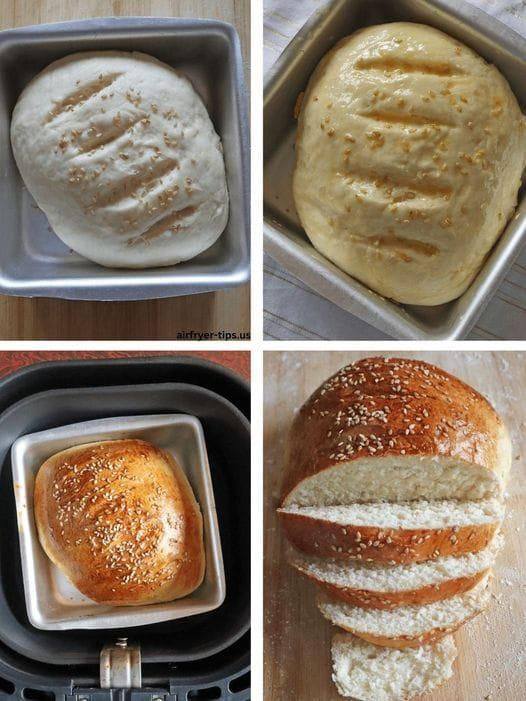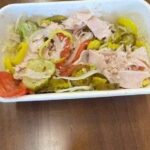
Easy Homemade Bread
Ingredients:
- 3 cups all-purpose flour
- 1 tablespoon sugar
- 1 teaspoon salt
- 1 packet (2 1/4 teaspoons) active dry yeast
- 1 cup warm water (about 110°F or 45°C)
- 2 tablespoons olive oil or melted butter
Instructions:
- In a large mixing bowl, combine the warm water and sugar. Sprinkle the yeast over the water and let it sit for about 5-10 minutes until it becomes foamy.
- Once the yeast is activated, add the salt and olive oil (or melted butter) to the yeast mixture and stir to combine.
- Gradually add the flour, one cup at a time, stirring well after each addition. Once the dough becomes too stiff to stir, turn it out onto a lightly floured surface.
- Knead the dough for about 5-10 minutes until it becomes smooth and elastic. If the dough is too sticky, you can add a little more flour, a tablespoon at a time, until it reaches the right consistency.
- Place the dough in a lightly greased bowl, cover it with a clean kitchen towel or plastic wrap, and let it rise in a warm, draft-free place for about 1-2 hours or until it has doubled in size.
- Once the dough has risen, punch it down to release the air bubbles. Shape it into a loaf and place it in a greased loaf pan. Alternatively, you can shape it into a round or oval and place it on a greased baking sheet.
- Cover the dough again and let it rise for another 30-60 minutes until it has doubled in size.
- Preheat your oven to 375°F (190°C). Once the dough has risen, bake it in the preheated oven for 25-30 minutes or until the top is golden brown and the loaf sounds hollow when tapped on the bottom.
- Remove the bread from the oven and let it cool in the pan for a few minutes before transferring it to a wire rack to cool completely.
- Slice and enjoy your freshly baked homemade bread! You can store any leftovers in an airtight container or resealable bag at room temperature for up to 3-4 days, or freeze for longer storage.


